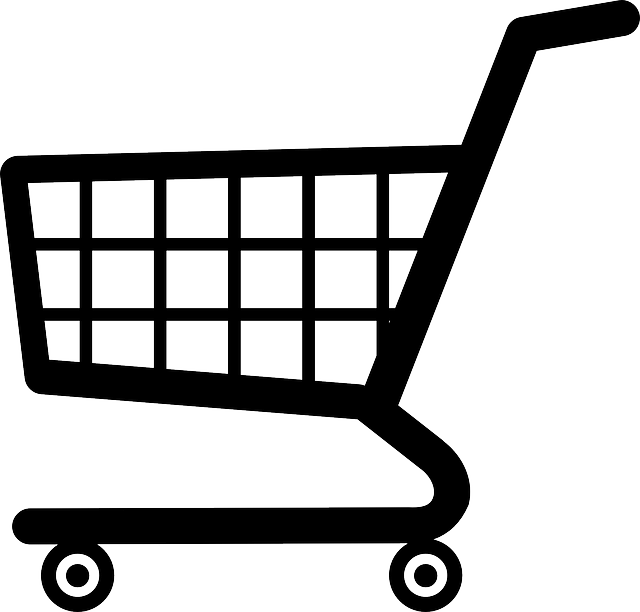Email can sometimes be a bit of an afterthought in people’s marketing strategy. In all the focus on social media, search engine optimisation, pay per click and so on it’s easy for email to be overlooked. Indeed, there are a lot of myths around email marketing – that no one ever reads emails, that emails just get deleted, that no one responds to emails – that mean many organisations don’t bother with it at all these days. That’s a big mistake. Done properly, we firmly believe that email marketing can be one of the most powerful and effective tools in your marketing box. Here’s why.
1. You own your email list
One of the risks associated with many popular digital marketing platforms is that you’re giving over control of the relationship you have with your customers and prospects to a commercial organisation. You don’t directly own that relationship yourself. The recent Facebook outage (which also brought down Instagram, WhatsApp and Messenger) is a good example of the implications of this. Companies that relied solely on these platforms in order to communicate with their audience were effectively unable to operate at all. If the only way that you can communicate with your customers is through Facebook then Facebook owns the relationship with them, not you.
One of the biggest benefits of building up a decent email marketing list is that you then have a direct relationship with the people on that list. You’re no longer reliant on another platform to mediate that relationship for you. Of course you’ll need to use a third party platform in order to send out your emails but that third party doesn’t own your email list – you do. You can switch to other options.
2. People DO engage with email – and it works
Email is a very effective form of communication. That’s because people are conditioned to do something with an email, whether that’s reply, forward, respond, click or buy (or delete, of course!). And, contrary to what many people believe, consumers do use email – in fact a recent Hubspot survey found that 91% of them do. That statistic alone should be enough to convince you to explore email marketing, as it’s a much higher percentage than use social media or click on pay per click ads.
Unless your industry accounts for the remaining 9% (which is very unlikely!) email presents an incredible opportunity to reach customers. Not only can you provide them with discounts, specials, new products and more, but also they can share and forward those emails to anyone they’d like. A good email marketing strategy is to encourage customers to share offers as much as possible. Effectively then your customers are doing your marketing for you.
Emails can be used effectively at all different stages of your sales process – to generate interest, to follow up an action, to nurture a behaviour, to convert a sale and to drive a response. Thinking through what contacts you have in your emailable list, what they have done in the past and what they want will really help you to target your emails and drive actions in the groups of people who already WANT to hear from you.
Response rates from emails can vary dramatically depending on the list you are working with. A cold list of bought data from a broker may have a response rate of around 1% on your initial mailing but can be emailed repeatedly throughout your contract. A warm list of opted in prospects or existing customers where you can target your messages based on their previous behaviour will often generate a better response and therefore the ROI really stacks up
3. Email marketing is extremely cost effective
With email you can reach a large number of people for very little cost. Depending on how many names are on your list and what system you’re using to send out your emails, the cost can be zero (beyond the cost of your time) or at the worst a few pence per message. The low cost per lead / conversion with email marketing is one of the main reasons why it’s a mistake to ignore this channel as a major route to market.
Depending on the volumes of contacts you have in your GDPR-compliant lists, you may find you can use a number of campaign management tools for free (Mailchimp for example allows an audience of up to 2000 in its free plan) or your CRM tools may well have email sending functionality as part of your subscription costs (Salesforce allows 5000 emails a day as part of its professional capability and HubSpot allows 2000 email sends a month in its free package).
4. You probably have the makings of a good email list already
Most organisations already have the makings of a good email list from the contacts that they have with their existing customers. The trick then is to work to build up that email list beyond your existing customers to a broader audience of people who are interested in hearing from you. Of course, there are GDPR rules around who you can send marketing emails to (separate from transactional emails around your sales processes) which it’s worth understanding before you start. We are not GDPR lawyers so if you are concerned always seek professional advice.
We suggest your key strategy here is to encourage as many people as possible to opt in to receive emails from you at every stage of their engagement with you. In the same way as you try to attract followers on Facebook, it’s worth putting effort into attracting opt ins to your email marketing. You can do this by putting a pop up on your website where people can sign up to a newsletter (and start sending a newsletter!), offering a valuable piece of content that people can sign up to receive, and plumbing your sales process into your email list system so when someone buys they can also sign up to the newsletter. Then start building up the quality of the content on your website and social channels to drive people to see these pop ups and free educational materials and see the value in signing up for them.
As part of this you will also need to make sure you have robust unsubscribe processes in place so you can remove people from your list if they decide that they do not want to hear from you, but if you use any off the shelf CRM systems or campaign management tools like Mailchimp this is easily configured.
5. Email marketing is easily measurable
Most of the tools we have mentioned here so far for email marketing (such as Mailchimp) have options for tracking the effectiveness of your emails, whether that’s simple bounces and opens or clicks or even really granular tracking of which parts of an email are clicked more than others.
Mailchimp allows you to create segments in your list based on the email tracking information so you can use this to send really highly targeted follow up messages. If your sales team have visibility of which people are opening and circulating particular emails they can use that information to better target their follow up activities.
You can see which messages are resonating or falling flat and do some rigorous testing on subject lines, topics, designs. These metrics are always useful in helping to determine what is working and not working and where to focus your attention. This information is impossible to get in such granular form from other kinds of marketing.
If you use UTM tracking tags in your emails then you’ll also be able to track the traffic in your Google Analytics to see there how well each email campaign is performing. There’s advice on how to set up UTM tracking tags elsewhere on our website.
6. Emails can be very tightly targeted
Email enables you to talk directly to people who are interested in hearing from you about specifically the things that they are interested in. The contacts on your email list will be at different stages in the buying cycle – some will be long standing customers, some will be brand new to the list, some may be dormant. Segmenting these contacts for your email marketing will enable to you to target the right people with the right message at the right time.
This can be a really formal process of steps: if this, send email A: if that, send email B, or it can be a less formal process done by eye. The tools you are using will help inform how much automation can be done but you can always treat customers and prospects differently or customers of product A v’s product B.
Building up behaviour information over time can also help – your tracking metrics will help you see if a particular group always click through and buy products of type N but never type O or if 6 weeks after purchase is the optimum time to follow up with your next offering. A survey by Hubspot suggests marketers who use segmented campaigns note as much as a 760% increase in revenue.
Also remember to personalise your emails – if you know your contact’s name then make sure you use it in your subject line or greeting line as this can really boost the open rate and response rate of your campaign.
7. Email marketing is direct, immediate and timely
More and more people are using their mobile devices to access emails which means people are attached to their email for huge chunks of their working and non working day and you can catch people at exactly the times that you would like to reach then.
Mailchimp reports average email open rates of around 20% with a huge swing towards emails being opening initially on mobile devices, so making sure your messages can be read easily on mobile is more important than every and presents a huge opportunity.
8. Email marketing is often more effective than social media marketing
In a recent report from Hubspot 4 out of 5 marketers said they’d rather give up social media than email marketing. Having someone opt in for emails with you often indicates a very significant level of interest in your products and brand which gives you the opportunity to develop that. Don’t send 6 messages a day to someone of course but using that engagement to share educational or community based messages as well as traditional sales messaging is a great way to maintain the list, encourage sharing and nurture the relationship.


